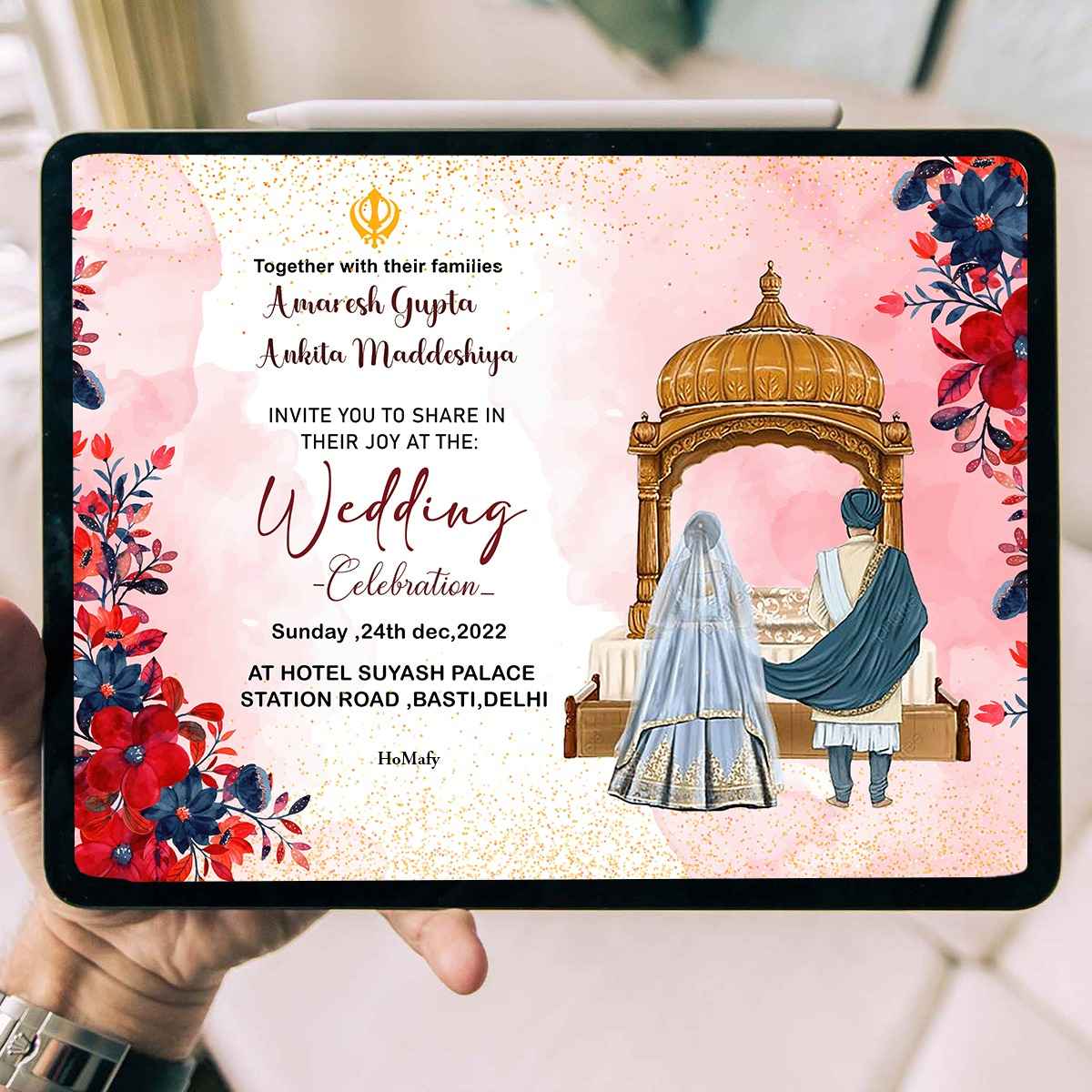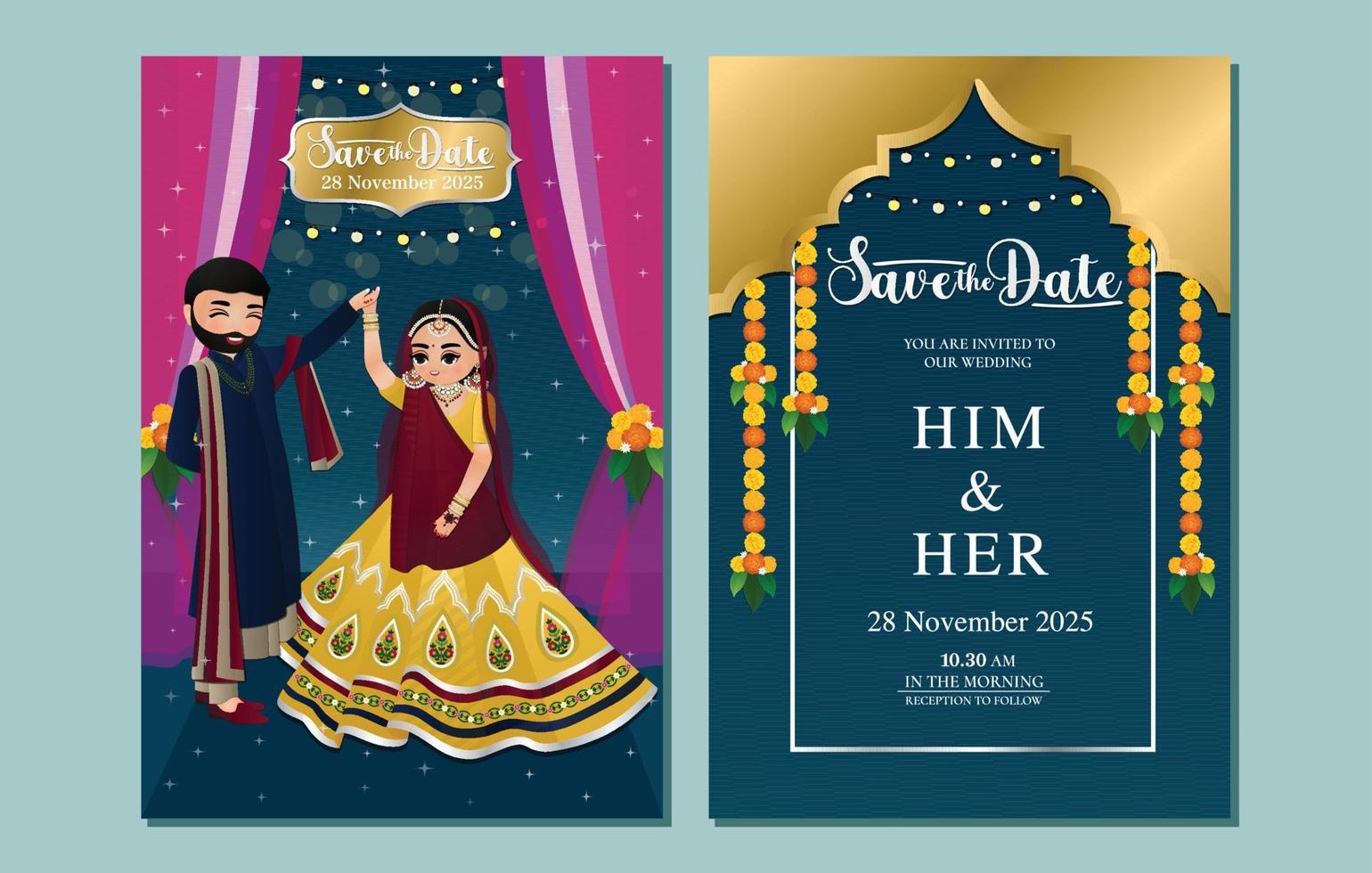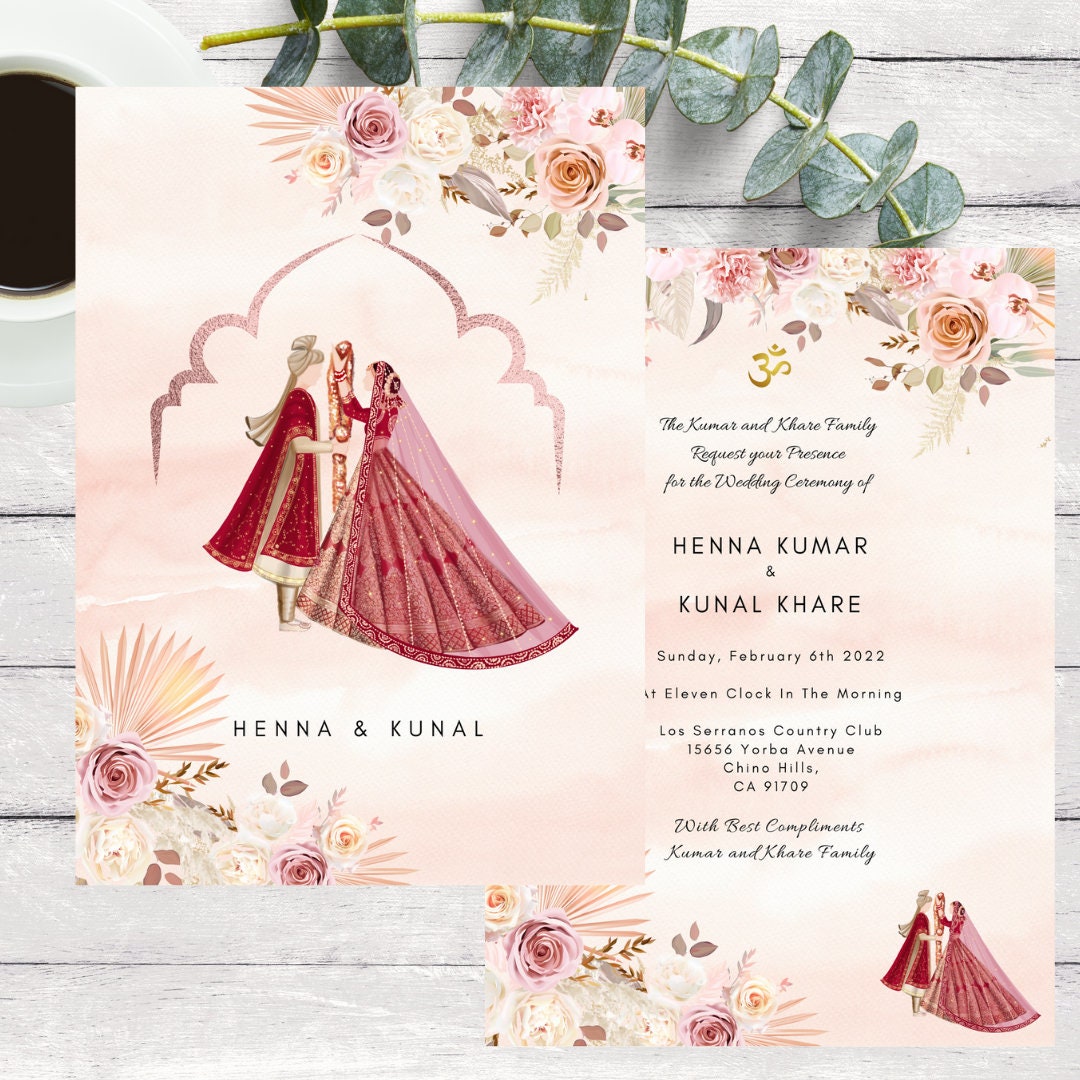E Invitation Card For Indian Wedding

The vibrant tapestry of Indian weddings, traditionally woven with elaborate rituals and opulent physical invitations, is undergoing a digital transformation. E-invitations are rapidly emerging as a preferred choice, impacting not only cost and convenience, but also the very fabric of how these momentous occasions are announced and celebrated.
This shift towards digital wedding invitations represents a significant departure from tradition. While elaborate paper invitations, often accompanied by sweets or small gifts, have long been a symbol of prestige and heartfelt invitation, the rise of e-invitations presents a compelling alternative. This article explores the multifaceted reasons behind this transition, examining its economic, environmental, and social implications within the context of Indian wedding culture.
The Allure of Efficiency and Economy
One of the primary drivers behind the adoption of e-invitations is their cost-effectiveness. Traditional Indian wedding invitations can be exceptionally expensive, involving intricate designs, high-quality paper, and personalized inserts.
E-invitations drastically reduce these expenses, eliminating printing costs, postage fees, and the logistical challenges of physical distribution. According to a 2023 report by *WedMeGood*, a popular Indian wedding planning platform, couples can save up to 70% on invitation costs by opting for digital alternatives.
Beyond cost, e-invitations offer unparalleled efficiency. Creating and distributing digital invites is significantly faster and easier than managing physical invitations, especially for weddings with large guest lists that are common in India. Changes and updates can be easily communicated, minimizing errors and ensuring everyone stays informed.
Environmental Considerations
The environmental impact of traditional wedding invitations is substantial, contributing to deforestation and waste. Elaborate designs often incorporate non-recyclable materials like glitter, plastic coatings, and heavy cardstock.
E-invitations, on the other hand, present a more sustainable option. By eliminating paper consumption, they reduce the carbon footprint associated with printing, transportation, and disposal. This resonates with a growing segment of environmentally conscious couples who seek to minimize their wedding's impact on the planet.
Many digital invitation platforms also offer features that further promote sustainability, such as the option to plant a tree for every invitation sent. This allows couples to offset their wedding's environmental impact and contribute to reforestation efforts.
Maintaining Tradition in a Digital Age
Despite the growing popularity of e-invitations, some traditionalists remain skeptical. Concerns are often raised about the impersonal nature of digital invites and their potential to diminish the significance of the occasion.
“For many families, the physical invitation is more than just a piece of paper; it's a symbol of respect and a tangible representation of the joyous occasion,” says Mrs. Lakshmi Iyer, a renowned wedding planner based in Mumbai. “It's something they want to cherish and keep as a memento.”
However, digital platforms are evolving to address these concerns. Many now offer customizable designs that incorporate traditional motifs, religious symbols, and personalized messages, allowing couples to create e-invitations that are both modern and respectful of tradition. Some even incorporate audio or video elements to add a personal touch.
Bridging the Digital Divide
A significant challenge lies in ensuring accessibility for all guests, especially those who may not be tech-savvy or have reliable internet access. This digital divide can exclude certain segments of the population from fully participating in the wedding celebrations.
To address this, many couples are adopting a hybrid approach, sending e-invitations to most guests while providing physical invitations to those who prefer them. This ensures that everyone feels included and valued.
Furthermore, offering assistance with RSVPing and accessing event information can help bridge the digital gap. Family members or friends can volunteer to assist guests who may need help navigating the digital aspects of the wedding.
The Future of Wedding Invitations
The trend towards e-invitations is likely to continue, driven by increasing environmental awareness, cost considerations, and the convenience of digital technology. As technology evolves, we can expect to see even more innovative and personalized e-invitation options emerge.
Interactive features like virtual tours of the venue, online guest books, and integrated gift registries are becoming increasingly popular. These features enhance the overall guest experience and make it easier for guests to participate in the celebrations.
Ultimately, the choice between traditional and e-invitations is a personal one, reflecting the couple's values, budget, and the cultural context of their wedding. However, the rise of e-invitations undeniably signifies a shift towards a more sustainable, efficient, and digitally integrated approach to celebrating Indian weddings.


















